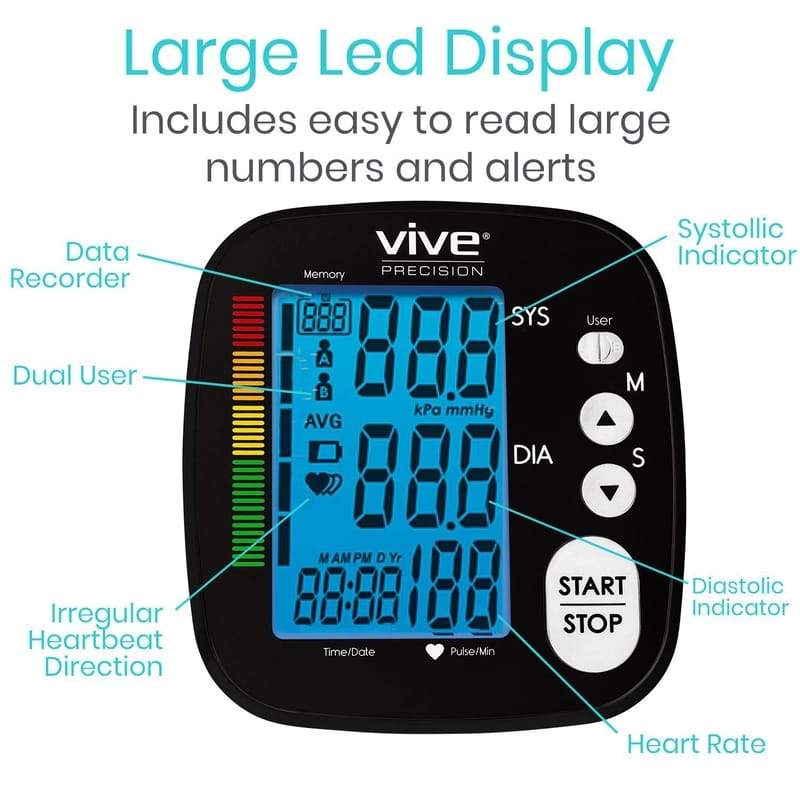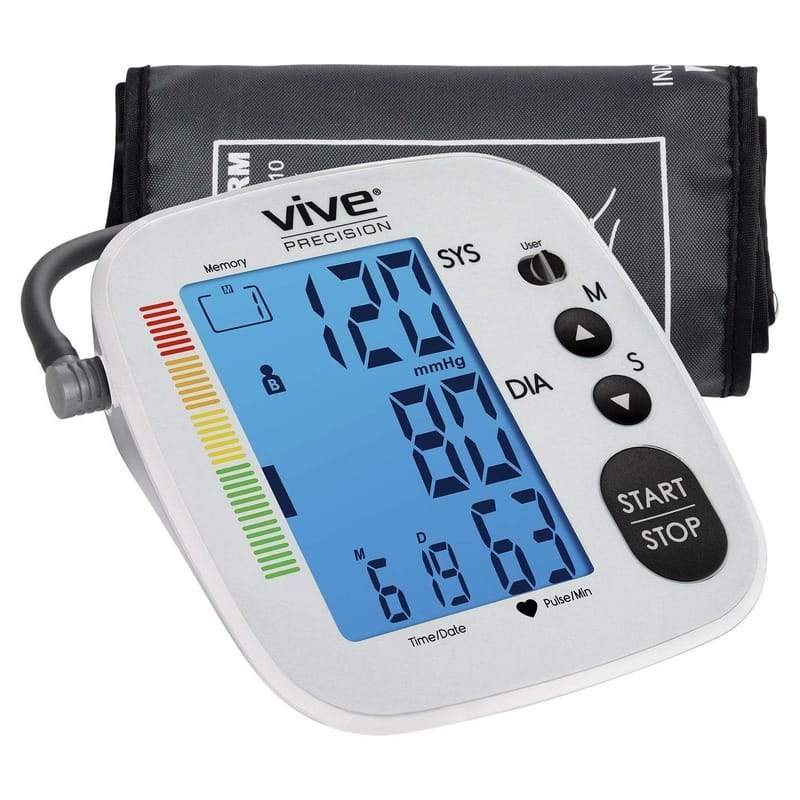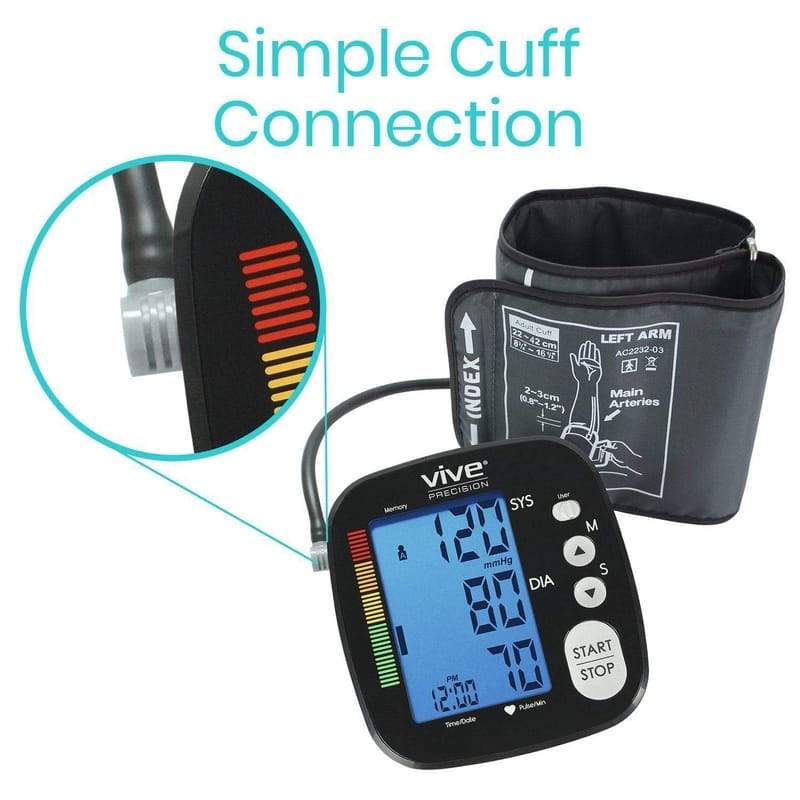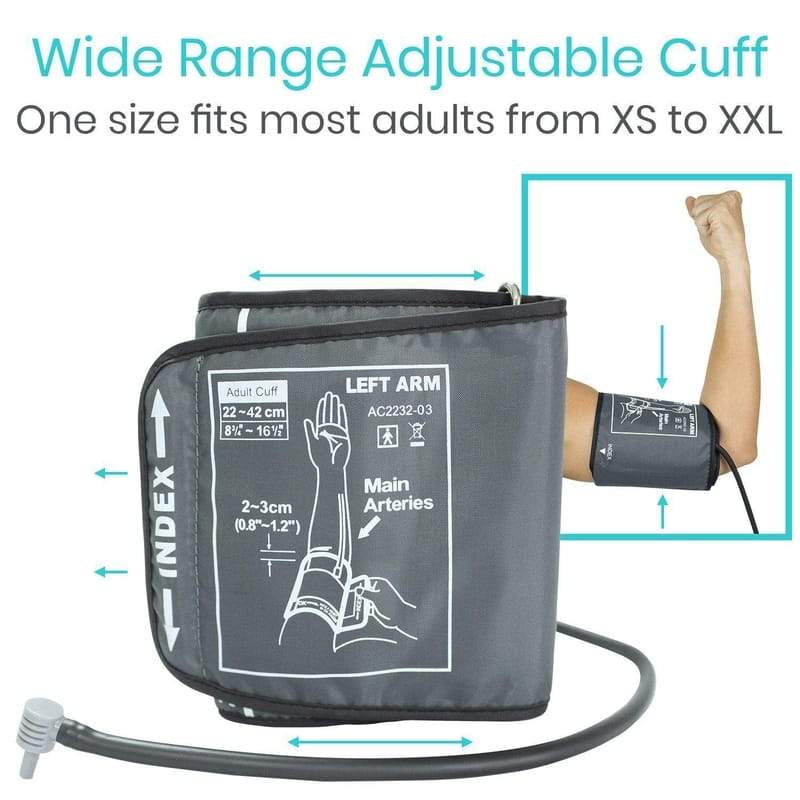Blood pressure is a key indicator of cardiovascular health, and irregular levels can lead to serious complications such as heart disease or stroke. A blood pressure monitor enables individuals to keep track of their readings, empowering them to take proactive steps toward maintaining a healthy lifestyle. A blood pressure monitor typically consists of:
- Cuff: Wraps around the arm or wrist to measure pressure.
- Pressure Sensor: Detects the force exerted by blood against artery walls.
- Display Unit: Shows the readings, often in digital format.
Blood pressure monitors come in two main types:
- Manual Monitors: Require a stethoscope and manual inflation of the cuff (used by professionals).
- Digital Monitors: Automatic and easy to use, ideal for home monitoring.
Advanced models may include features like irregular heartbeat detection, Bluetooth connectivity, and memory storage for tracking historical data.
Features
- Automatic Inflation and Deflation: Ensures ease of use.
- Digital Display: Provides clear and accurate readings.
- Memory Storage: Saves previous readings for trend analysis.
- Compact Design: Portable for convenient use at home or on the go.
- Advanced Indicators: Detects irregular heartbeats or movement errors.
Advantages
- Health Awareness: Allows individuals to monitor and manage blood pressure regularly.
- Early Detection: Identifies potential health issues before they become severe.
- Convenience: Enables easy, on-demand readings at home.
- Data Sharing: Facilitates communication with healthcare providers.
- Cost-Effective: Reduces the need for frequent clinic visits.
Applications
- Hypertension Management: Helps individuals keep blood pressure in check.
- Routine Health Checks: Useful for regular monitoring of overall cardiovascular health.
- Fitness Tracking: Monitors the impact of exercise or diet on blood pressure.
- Post-Surgery Care: Tracks recovery progress for patients with cardiovascular issues.
Care Instructions
- Regular Cleaning: Wipe the cuff and monitor with a damp cloth to maintain hygiene.
- Proper Storage: Keep the device in a dry place to prevent damage.
- Battery Maintenance: Replace batteries as needed to ensure functionality.
- Avoid Over-Tightening the Cuff: Prevents damage to the cuff material.
Precautions
- Follow Instructions: Use the device as directed for accurate results.
- Correct Positioning: Ensure the cuff is placed correctly on the arm or wrist.
- Rest Before Measurement: Avoid taking readings immediately after physical activity.
- Seek Medical Advice: Consult a doctor if readings are consistently high or low.
A blood pressure monitor is an essential tool for individuals managing cardiovascular health. Its ability to provide accurate, real-time readings empowers users to take control of their well-being and make informed decisions. Whether used at home or in clinical settings, this device plays a vital role in preventing and managing health issues effectively.








Reviews
There are no reviews yet.